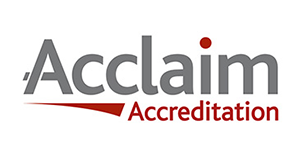
Onsite Concrete Mixing: A Comprehensive Guide to Efficiency and Quality
In the construction world, where time and precision are a priority a new superhero has emerged. Onsite mixed Concrete is an innovative approach that not only improves concrete quality but it is quite revolutionary in increasing overall efficiency & productivity.
Traditional techniques cannot match the excellence this mixing method delivers. This blog post covers the fundamentals of Onsite Concrete mixing and will ultimately lead you to a step-by-step mixing process. We will put some emphasis on the strategies for improving efficiency during onsite concrete mixing afterwards.
So, do not wait any further. Let us begin with full enthusiasm together. Stay tuned!!
What is Onsite Concrete Mixing?
Unlike the traditional method where the concrete was pre-mixed at a remote batching plant & transported to the site, this concrete mix is different. Onsite concrete mixing, also termed site mixed or batch mixing of concrete refers to the process of preparing concrete at the construction site itself.
The raw materials required for concrete including cement, aggregates like sand & gravel, water and any other materials are brought to the site separately. These are then combined and mixed on-site to create the required concrete mixture.
It enables construction teams to have greater control over the concrete production process. This further motivates them to tailor the mix according to the project’s unique needs. Additionally, This ensures that the concrete is fresh and workable when it is placed.
Hence, the whole process contributes to better overall project efficiency and quality.
Step-By-Step Mixing Process
The process of step-by-step mixing of onsite mixed concrete begins with accurate preparation. This section will guide you through the same in detail below. Come along with us and let us get started on this!!
Site Preparation and Safety Measures
The process critically involves clearing and levelling the construction area and allocating space for equipment and materials. Therefore, the safe movement on-site must be fully ensured while implementing robust safety measures.
All the personnel must wear proper personal protective equipment (PPE) and clear boundaries must be established. Moreover, hazardous material storage areas must adhere to strict safety guidelines, especially for substances like cement.
Batching and Measuring Of Materials
Accurate measurement of essential components like cement, aggregates, water and any additives is a necessary procedure. Each material is precisely weighed according to the predetermined mix design making sure the right proportions for the desired concrete properties.
Advanced batching equipment aids in achieving this accuracy. In this regard, digital scales and measuring devices ensure that the correct amount of each ingredient is added to the mix. The attention to detail lays the foundation for a consistent and high-quality concrete mixture.
Ultimately, this sets the stage for subsequent steps in the onsite mixed concrete process.
Loading Materials into the Mixer
The loading of these components into the mixer is the next step once the materials have been accurately measured and prepared. This is where the carefully proportioned ingredients come together to create the concrete mix.
The cement, aggregates, water, and any additives are carefully introduced into the mixer with precision as the goal. This step demands careful attention to avoid spillage or misplacement of materials, which could impact the final mix’s quality and consistency. The loading process serves as the crucial bridge between meticulous material preparation and the subsequent mixing phase.
Hence, it sets the stage for the transformation of raw materials into a cohesive and workable concrete blend.
Mixing Process and Monitoring Consistency
Accurate measurements of various ingredients including cement, aggregates and water are carefully loaded into the mixer. While the mixer is running the gradual addition of water helps achieve the desired consistency.
To ensure quality monitoring the mix’s uniformity tests are necessary. Regular water or dry mix adjustments are made to maintain the ideal texture.
Testing and Adjusting the Mix as Needed
The mix’s characteristics are assessed through tests such as slump tests, air content tests and visual inspections performed regularly. If any inconsistencies arise precise adjustments are made to achieve the desired consistency and workability like the addition of water and dry mix.
This process guarantees that the concrete meets the specific requirements for strength, durability and performance. Ultimately, this leads to construction materials that can withstand the test of time and environmental challenges.
Strategies for Improving Efficiency During Onsite Concrete Mixing
This section of the blog post will emphasise the various strategies for improving the efficiency of onsite mixed concrete procedures.
Let us have a closer look at it together!!
Organising the Workspace and Materials
By arranging the equipment tools and ingredients in a structured manner you can minimise unnecessary movement and time wastage. Properly positioned materials reduce the chances of errors and allow for smoother workflow.
Furthermore, having a systematic layout establishes safety and accessibility that ensures all elements are within reach. This foundation sets the stage for a more efficient and productive onsite concrete mixing process that contributes to timely and successful construction endeavours.
Optimising Batching Processes
Accurate measurement and distribution of raw materials through automated systems ensures precise mix proportions. Additionally, when these are coupled with advanced software for real-time monitoring it can be of great help.
Well-organised batching layouts reduce unnecessary movements plus a trained team and regular equipment maintenance sustain efficiency.
Minimising Waste and Spillage
Accurate measurements, automation and careful training can help in the efficient utilisation of materials. Innovative equipment and consistent maintenance can further prevent spills. Also, thoughtfully organising the workplace can make a great difference in waste reduction.
This approach not only increases efficiency and overall productivity but also reduces unnecessary loss.
Collaborative Teamwork
When the team communicates effectively, coordinates tasks seamlessly and takes into account each member’s strength the overall workflow becomes more streamlined and responsive. Clear roles and responsibilities along with open channels of communication reduce errors and prevent delays.
Furthermore, regular team meetings to discuss progress and challenges establish a proactive approach to problem-solving. This leads to increased efficiency and successful project outcomes by promoting a sense of unity and shared purpose.
Conclusion
In a nutshell, the world of construction requires achieving both efficiency and quality. In onsite mixed concrete, precise batching and thorough mixing to waste reduction and collaborative teamwork every little aspect contributes to success. Embracing automation, advanced tech and teamwork definitely cultivate a culture of excellence. So, refer to this blog post as your guiding map for your future construction endeavours.
Best of luck with your projects as they stand as a testament to both skill and dedication.

















